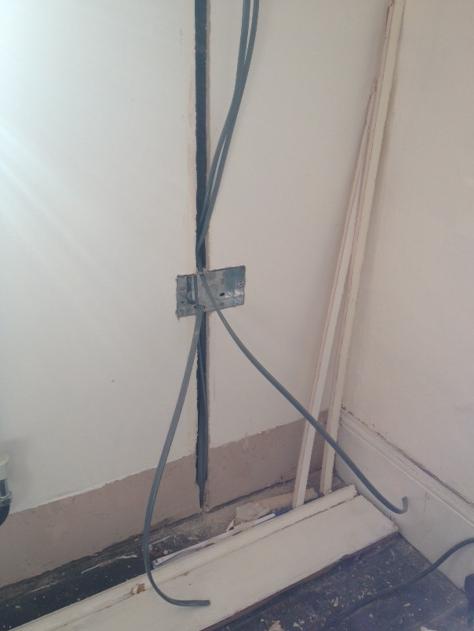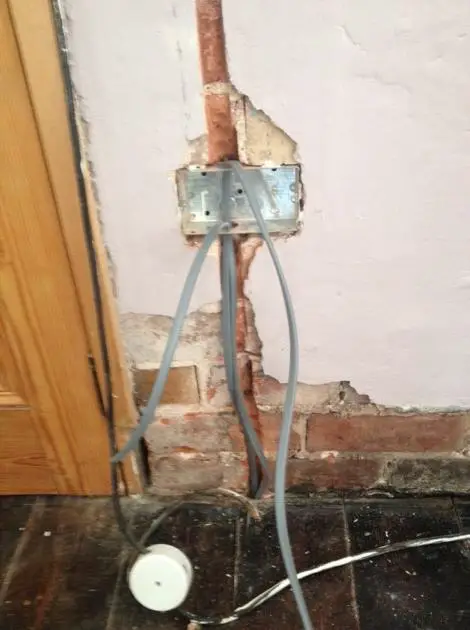What John has said is correct. You can have more than 44 meters using twin and earth 1.5 mm² it is up to you the designer to work out the design current. So if I take my house living room is 30W, dinning 48W, kitchen 120W bedrooms 20W so total is around the 350W mark so around 1.5A.
Sorry may have given local link before
this one is the web site and if you enter 4.7 Ω as Zs and 1.5 mm² line and 1 mm² earth no for ring and 2 amp for design current you will gets around 137 meters. But Zs of 1.8 Ω and 6 amp design gives 44 meters both within 6.9 volt drop.
Working out the design current we use to use the On-site guide which from memory tells us to use 60W per fitting but clearly where the fitting will not take 60W one does not have to allow for it.
There is nothing to stop one using a ring with lighting or splitting lighting into groups but the British system is rose to rose not switch to switch which tends to reduce the volt drop.
The problem with some one else testing your work is your open to how they see the rules and some rules are not that easy to say exactly what they mean. As an example.
314.1 Every installation shall be divided into circuits, as necessary, to:
(iii) take account of danger that may arise from the failure of a single circuit such as a lighting circuit.
Now I have considered having an emergency light above the stairs means although my house which has a single lighting supply it is complaint. But where one relies on using lighting from sockets to ensure on a single MCB or RCD failure your not plunged into darkness then it's up to the inspector if he accepts under normal use the table lamp will be on.
Using all RCBO then there is clearly not a problem but using two RCD's is cheaper. So first step is design and ensure whole design is submitted so the council have to option to query anything they don't like before you install not after.
The two week time is between finishing a section and council inspection not sure it is two weeks but they have a time limit after which your allowed to proceed even if they have not inspected although you would be silly to do so. I see no problem the way you propose doing the work but doing room by room having to wait even one day before you can power up is a problem.
Councils do vary Liverpool were really helpful Flintshire were a real pain. I would guess the way you describe LABC fees around the £500 mark.
When my meters went for calibration I went to hire a set they wanted £75 for the minimum hire time of one week.
Some of the jobs my son got involved in took years and this caused them a problem as when he got divorced he stopped sole trading and went cards in and a condition of the employment was not to do any work on the side. He had a month to finish off all his work but that only works when the client was ready for him. There were a few unfinished jobs. This would be a problem for you with any one but LABC as people do stop trading and only the LABC can be relied on to be there on completion.
I really do wish you luck it is a large undertaking and the planning is the worse part. Look at a populated consumer unit 10 way at £50 and a RCBO at £20 so using RCBO's it £100 plus empty consumer unit at £24 I looked at
Screwfix and BG brand for prices. Personally I would use RCBO's but it's your call.
This is repeated be it sockets or switches there are many options. I looked for two gang intermediate switches only some makers do them an if you want all to match then you have sometimes to use more expensive gear.
The how much to do is always a problem. I told my son he was going OTT with his house with a LAN connection at every radiator and it turned out I was right as he can't get hard wired TRV's so his switch in loft is not really required he will never need 100 hard wired LAN points and now the loft stairs are fitted the switch is not coming out of the loft. OK a little extreme but shows reason for planning.
Some things like two 32A radials to kitchen makes sense so may people want separate hob and oven. Others are a waste I installed cables ready for ring in my mothers house I now guess they will never be used.
Again good luck.




